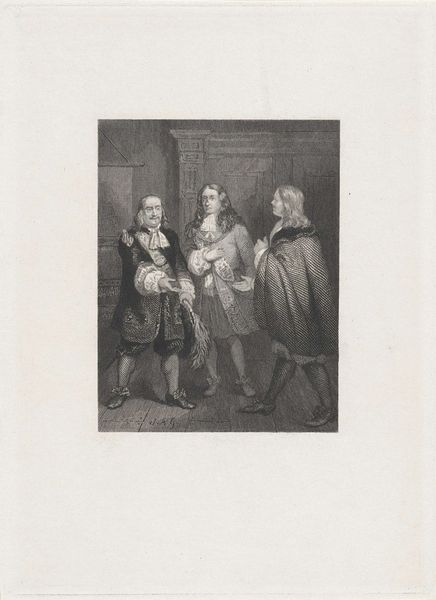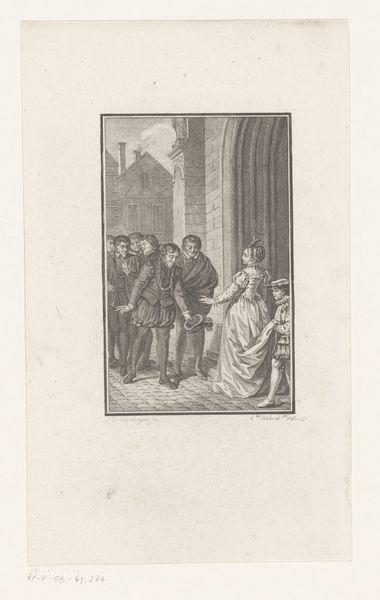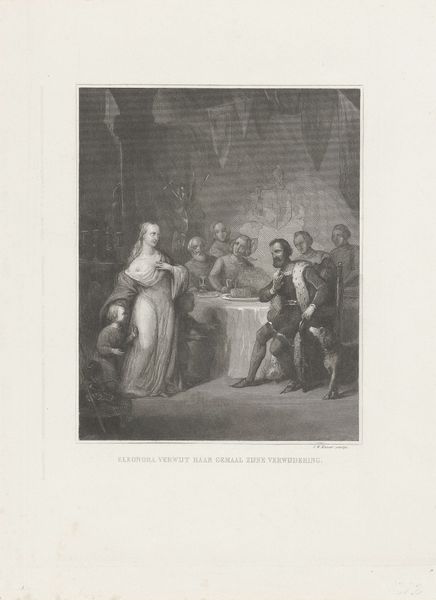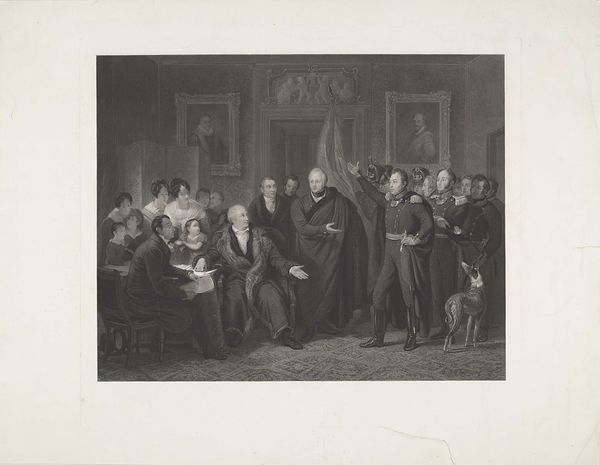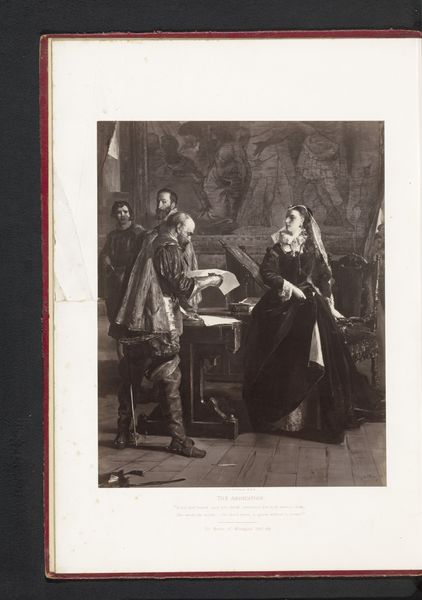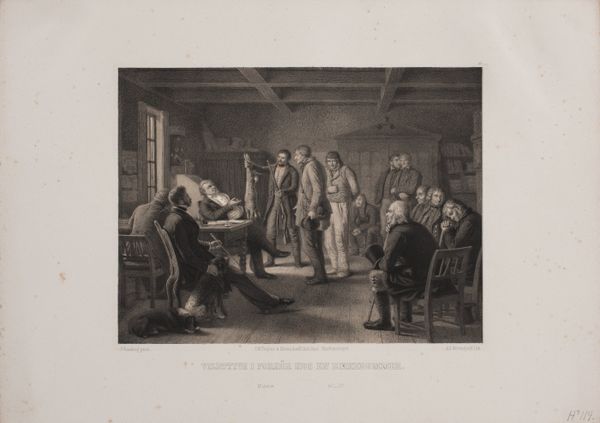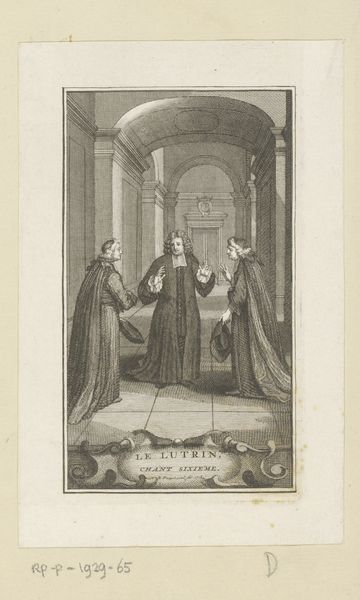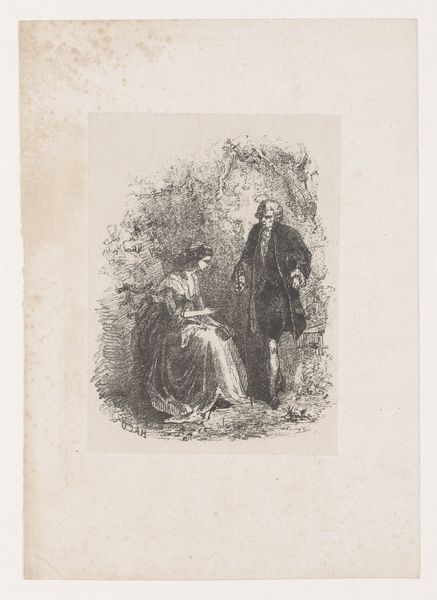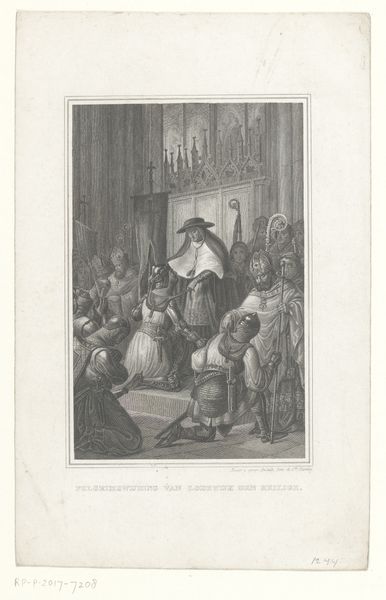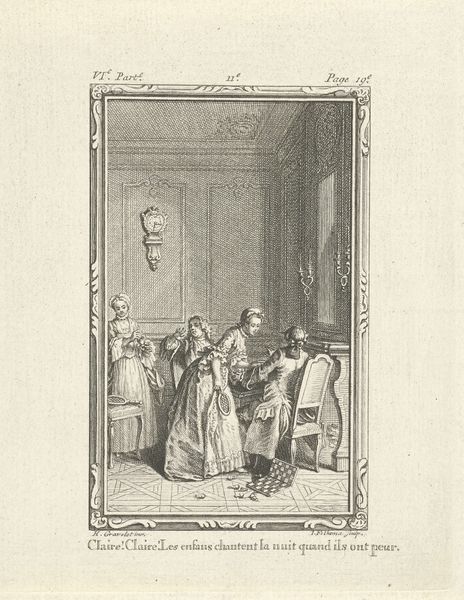
Mary, Queen of Scots on the scaffold 19th century
0:00
0:00
drawing, print, paper, engraving
#
portrait
#
drawing
#
narrative-art
# print
#
paper
#
history-painting
#
engraving
#
monochrome
Dimensions: Plate: 8 1/8 × 5 15/16 in. (20.7 × 15.1 cm) Sheet: 10 3/8 × 6 7/8 in. (26.3 × 17.4 cm)
Copyright: Public Domain
Editor: This is a 19th-century engraving on paper by Narcisse-Edmond-Joseph Desmadryl titled "Mary, Queen of Scots on the scaffold." It depicts, as the title suggests, Mary’s execution. It feels very staged and somber. How do you interpret this work, focusing on its materials and context? Curator: It’s critical to view this engraving as an object produced and consumed within a specific economic system. The choice of printmaking, particularly engraving, makes this scene accessible to a broader audience than a painting might. Consider the implications of mass reproduction—what was the market for these historical images, and what did it mean to consume an image of royal execution? Editor: That's interesting! It's not something I initially considered. So, the availability of the print meant it could reach a larger audience. What was the socio-political atmosphere when these engravings were popular? Curator: Exactly! This ties into understanding its value as an object beyond just an image. These prints were circulating during a period of intense political and social change, with shifting ideas around power, nationhood, and historical narrative. How might the viewers' engagement with the labor that made these images – the engraver, the printer, the distributors – have affected their reception? Editor: So, it’s not just about what’s depicted but also how it was made and distributed. Does the paper it’s printed on hold any significance? Curator: Absolutely. The quality and source of the paper tell us about production costs and audience targeting. Was it mass-produced on cheaper stock or intended for a wealthier clientele with higher-quality paper? Considering the raw materials reveals production and consumption dynamics during that period. We're tracing how political theatre gets transformed into commodities. Editor: That reframes the entire picture. I was caught up in the historical drama, but focusing on the materials and the means of production opens up a whole new layer of understanding. Curator: Precisely. And how those things influence the narrative of power that the artwork seems to want to portray. Seeing art as a product helps to see it also as part of a socio-economic web.
Comments
No comments
Be the first to comment and join the conversation on the ultimate creative platform.

